Reflecting on 2022: Capturing Once-in-a-Generation Opportunities for Trails, Walking and Biking
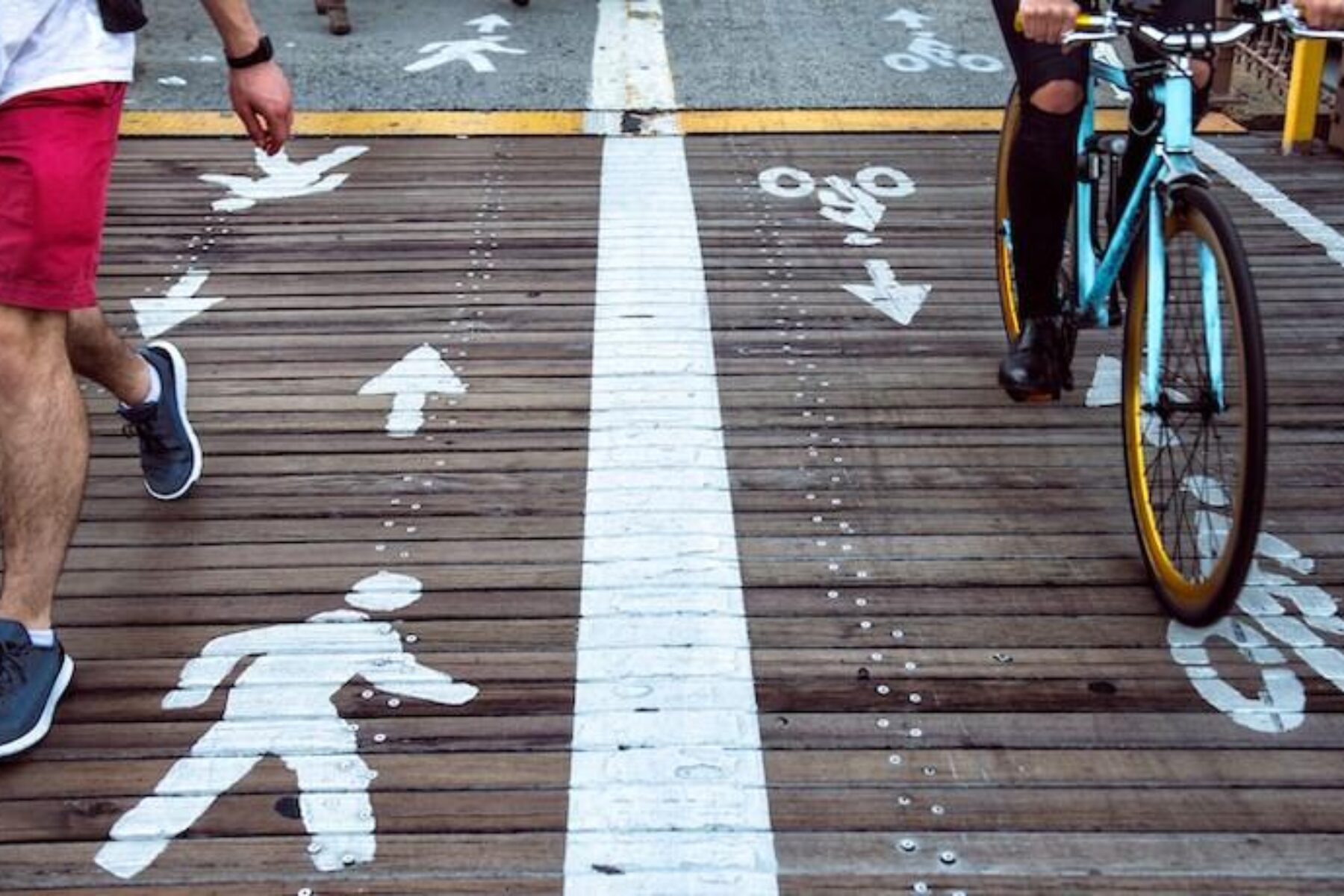
When Rails-to-Trails Conservancy (RTC) welcomed 2022 in January, we did so with excitement and energy. Unprecedented demand in recent years for trails and walking and biking facilities, and the passage of a $1.2 trillion infrastructure bill in late 2021, has the potential to be transformative for hundreds—and potentially thousands—of communities in America.
Understanding the once-in-a-generation opportunities before us, we moved forward to elevate and champion the innovative funding programs available now to connect communities and regions by trail, and we embraced strategic practices and methods to deliver on our goal of making safe walking and bicycling routes accessible to everyone.
This December, we’re taking time to reflect on the challenges and changes, hard work and persistence, that’s made up the fabric of this impactful year. As we bid farewell to 2022, we take stock of our impact and extend our appreciation to the many partners, friends and supporters who’ve worked so passionately to make our collective achievements possible.
Securing Unprecedented Funding for Active Transportation
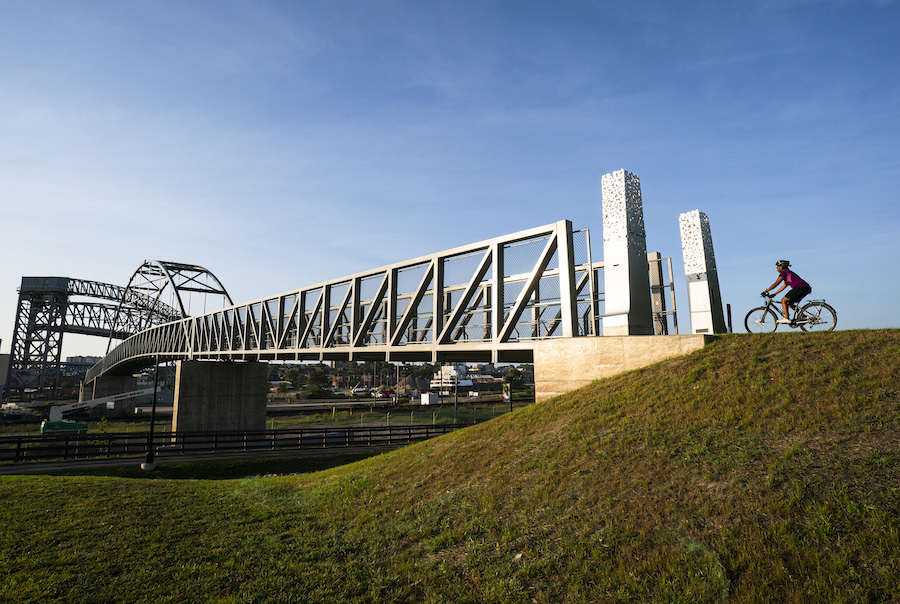
The signing of the Bipartisan Infrastructure Law (BIL) in November 2021 ushered in opportunities like never before to help complete the nation’s active transportation networks, with critical infusions of funding (in the billions) making it possible to close gaps and connect trail systems. Within the bill was record-level funding for existing programs, including a 70% increase in the Transportation Alternatives program, and new programs prioritizing safety, climate, equity and connectivity in communities.
RTC and partners worked hard to advocate for this transformative bill, and in 2022, we set forth to help ensure the funding will be deployed to help as many communities as possible complete vital projects that—in turn—will deliver myriad economic, health, safety, mobility and climate benefits.
In August, we were ecstatic when the U.S. Department of Transportation (USDOT) announced its most recent awards under the Rebuilding American Infrastructure with Sustainability and Equity (RAISE) program. Most of the projects included in the $2.2 billion funding round accounted for the needs of bicyclists and pedestrians—underscoring both the recognition by leadership of the huge demand for active transportation, and that trails, walking and bicycling are fundamental to healthy and equitable community design.
Throughout the year, RTC continued to urge Congress to dedicate significant funding to the new program we championed in the BIL—the Active Transportation Infrastructure and Investment Program (ATIIP)—a unique initiative that will specifically fund the planning and construction of connected trail networks. When fully funded, the impact of ATIIP will be transformative for America’s transportation system, accelerating the completion of trail networks and making it easier and safer for people to walk and bike to daily destinations. With the final 2023 spending bill still in negotiations, RTC is optimistic that the program will receive the funding necessary to begin making an impact.
At the state level there was much to celebrate, as RTC and trail advocates succeeded in securing nearly $1.3 billion in new and renewed funding for trails—surpassing last year. Of note was California’s historic victory, with the state dedicating a massive $1 billion+ investment for trails and active transportation for the 2023 fiscal year. This record-level funding commitment, made possible by joint advocacy from RTC and many partners in California, will have an enormous impact on developing and connecting the state’s trails and walking and biking facilities.
The announcement was timely, coming on the heels of the January release by RTC and the Bay Area Trails Collaborative of the first comprehensive map outlining a regional vision to connect 2,600 miles of trails across nine counties. An RTC TrailNation™ project, the Bay Area regional trail network will increase safe walking and bicycling access for millions of people and could generate as much as $6.6 billion annually for the California economy.
Advancing Trail Network Connectivity Across the Nation
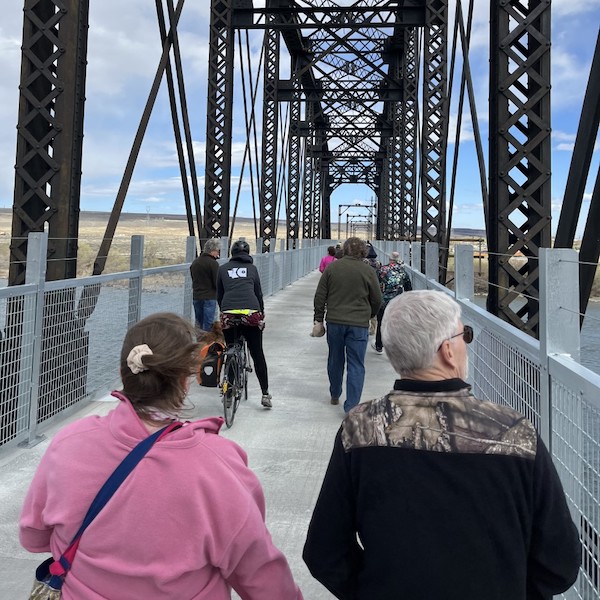
With the national focus and demand for trail networks increasing each year, we continued our work in 2022 to buildout this vital infrastructure in collaboration with hundreds of partners and public leaders.
The Great American Rail-Trail® saw significant progress this year, with local partners securing a record $31.2 million in public and private funds—the highest amount raised annually since the launch of the project—to help complete gaps along the 3,700-mile route. Since 2019, a combined $65 million+ has been raised for Great American-related projects.
In April, RTC and partners in Washington State had major cause for celebration with the rehabilitation of the Beverly Bridge, a $5.5 million trestle retrofit along the in-progress, 285-mile Palouse to Cascades State Park Trail. The bridge now serves as a critical gateway for trail users on both sides of the Columbia River and represents a huge milestone in efforts to complete the trail and make cross-state tourism possible.
With the launch of the Beverly Bridge and other developments, the Great American is now 54% complete with 2,042+ miles on the ground as of 2022. The cross-country route will have a big impact on economic development in adjacent communities—potentially generating more than $229 million in visitor spending and adding $161 million to the GDP annually, according to a study released in May 2022 by Headwaters Economics and RTC.
In the Greater Philadelphia–Camden, New Jersey, region, RTC and partners commemorated the 10-year anniversary of the Circuit Trails, an RTC TrailNation™ project that will connect 800 miles of multiuse trails across nine counties. In 2012, the system was 31% complete with 250 open miles. Over the past decade, trail connections have been added on both sides of the Delaware River, taking the network to 374 miles and 45% complete.
To date, an estimated $350 million has been invested in the system that will change the way people live, work and get around in the region.
RELATED: Beverly Bridge Opening Marks Major Jump Toward Statewide Trail Connectivity in Washington
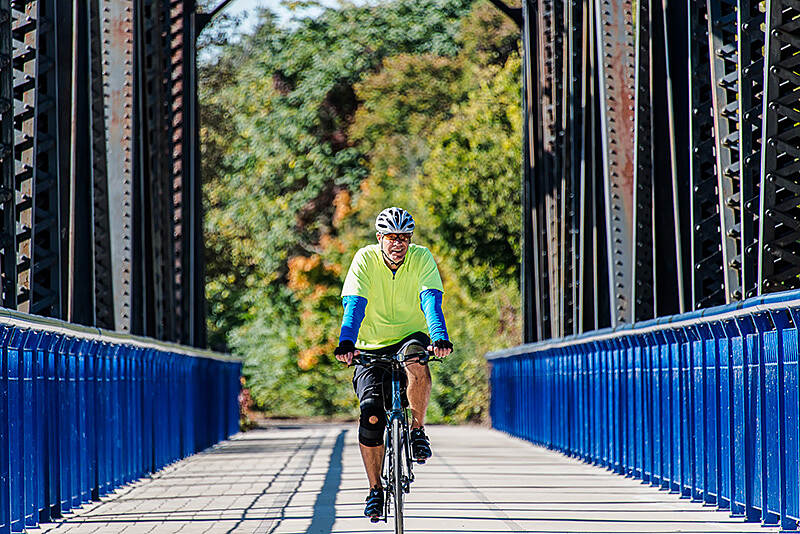
In the Fall of 2021, Gov. Eric Holcomb declared 2021–2022 “Indiana’s Year of the Trails,” recognizing that a statewide trail system could be a “powerful tool for economic and community development.” Gov. Holcomb and the state’s legislative trails caucus, a bipartisan group spearheaded by RTC and the Greenways Foundation of Indiana, have galvanized support for trails throughout Indiana. The leaders are committed to building even more political support for trail network development and recommendations laid out in the 2021 Indiana State Trails Plan.
“Challenge accepted. We’re going to be paying close attention to the competition, but we won’t wait for second [place] to catch us.”
—Gov. Eric Holcomb on Indiana’s plans to build out the Great American Rail-Trail
The momentum could mean great things for projects such as Indiana’s 215-mile section of the Great American Rail-Trail, which is currently 50% complete. “I am really excited about the opportunity we have now to build out the … Great American Rail-Trail,” said State Rep. Carey Hamilton, Co-Chair of the Indiana Legislative Trails Caucus, in an October 2022 interview. “I hope that will be at the top of the caucus’ agenda this year. And I think it will be prominent in the Statehouse … as we go into a budget cycle and look to start to fill in those sections that we still need to complete, that 50%.”
In 2021 and 2022, RTC recognized Gov. Holcomb and Rep. Carey Hamilton, respectively, as Doppelt Family Rail-Trail Champions for their leadership in championing trail development and the Great American Rail-Trail as an economic and tourism driver in the Hoosier State.
Uniting and Energizing the Nation’s Trail Builders
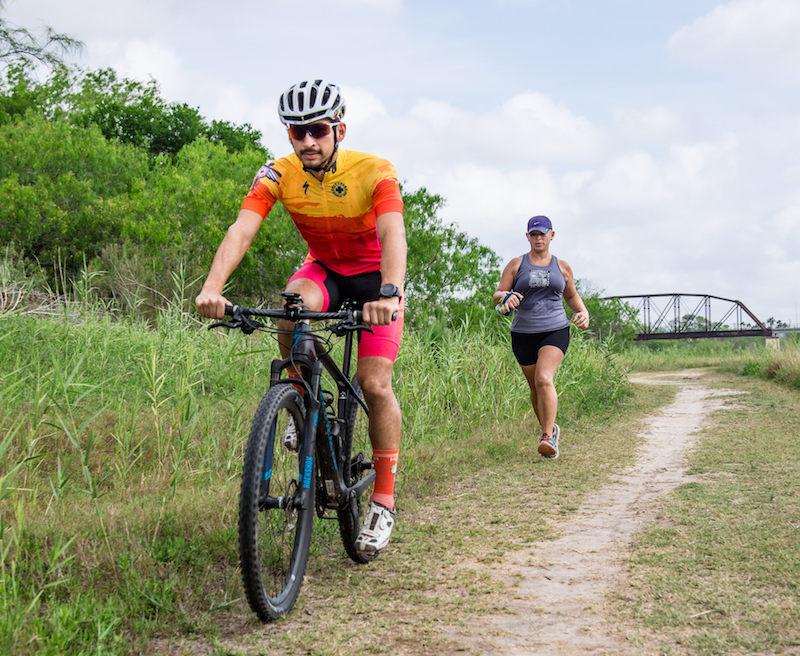
Since 1986, RTC has served as the country’s leading national champion for trail development, working with thousands of partners to build up our knowledge and understanding of best practices for creating connected trails and active transportation networks. Over the past few decades, we’ve developed many of the nation’s leading industry tools and resources through our trail building and technical assistance work and initiatives such as TrailNation, a portfolio of eight diverse local and regional trail network projects.
In 2022, we focused on taking this knowledge to the next level of scale, announcing in November the pending launch of the TrailNation Collaborative, a one-of-a-kind initiative designed to bring people together regionally and at the national level to learn from each other, share best practices, get tested guidance and take the guess work out of building trail networks.
Our goal with the collaborative is to share our collective expertise and accelerate trail network development nationwide—taking advantage of the once-in-a-generation funding opportunities that are available for trails and active transportation systems right now.
Join Us in the TrailNation Collaborative
RTC is launching the TrailNation Collaborative in January! Join today to be automatically enrolled. You’ll be among the first to receive more information when the collaborative officially launches.
If the TrailNation Collaborative sounds like something that could benefit your work, please take this quick survey. It will give us important insight as the program gets going.
RELATED: New TrailNation Collaborative Community to Escalate Trail Network Development Nationwide
Elevating Equitable Access to America’s Trails
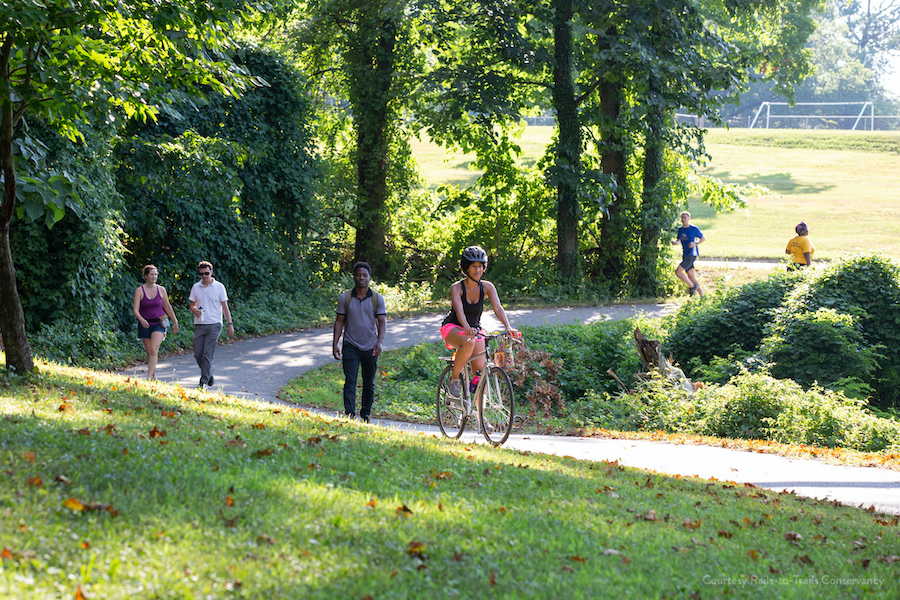
Understanding the need for the national trail community to prioritize grassroots leadership and development of safe walking and bicycling infrastructure, particularly in underserved areas and Communities of Color, RTC is focusing on developing resources and partnerships that will result in meaningful change and empowerment in America’s neighborhoods.
In 2022, we launched two new sections of our Trail-Building Toolbox focused on Equitable and Inclusive Trails and accessible design. These resources provide comprehensive advice and best practices to assist planners in ensuring every stakeholder in a community is part of the trail development process and will benefit from their use.
In February, four of RTC’s Route of the Badger partners in Milwaukee received a $200,000 grant from the Catena Foundation to jumpstart a community-led equitable-trail-development process for the creation of a 7.25-mile shared-use trail along the underutilized 30th Street Corridor. The trail project will be transformative in reconnecting underserved neighborhoods along the route that have historically been segregated by busy interstates.
In November, RTC announced it had awarded a combined $300,000+ to 25 local and national organizations through our 2022 Trail Grants Program to build organizational capacity and develop inclusive and equitable trail programming to engage residents in underserved communities.
RTC has awarded more than $2.6 million in grants since 2008 to 354 projects around the country. This latest grant cycle was specifically geared toward projects designed to remove barriers to trail use, through programming and community-led initiatives, for low-income youth, women and Communities of Color.
RELATED: Rails-to-Trails Awards $300,000+ to Support Inclusive Trail Projects Across the Nation
World Record Holder Completes 475-Mile Wheelchair Trek on the Great American
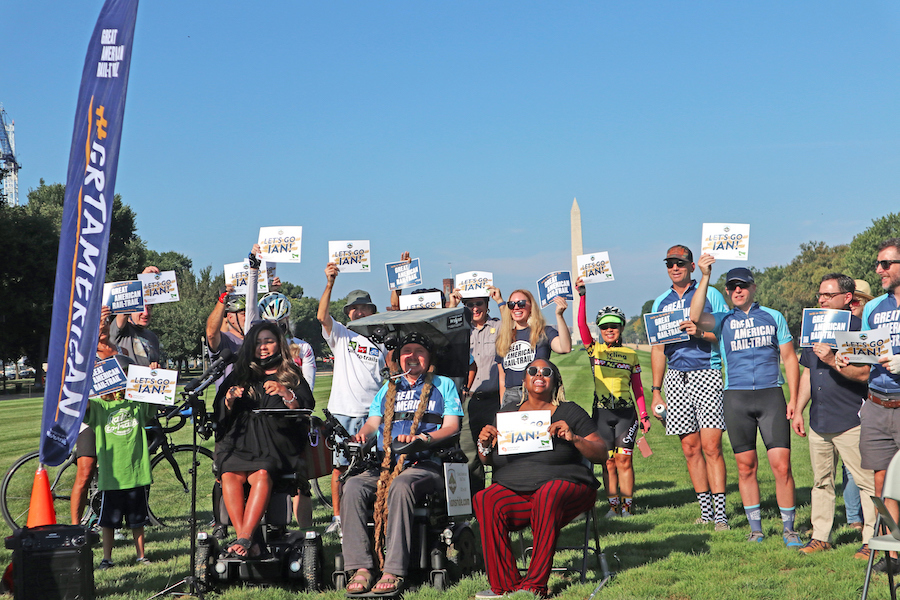
Guiness World Record Holder and disability rights advocate Ian Mackay has relied on a power wheelchair for mobility since 2008, when a spinal cord injury from a bike crash left him a paraplegic. Mackay has since rebuilt his life on trails in his home state of Washington and across the nation.
In October 2022, Mackay completed a 12-day, 475-mile ride along the easternmost portion of the 3,700-mile Great American Rail-Trail, from Washington, D.C., to Columbus, Ohio. A project of Ian’s Ride, which he founded in 2017, MacKay collaborated with the United Spinal Association (USA) and RTC to design the ride to raise awareness around the importance of, and need for, more access to the outdoors for people with mobility impairments and other disabilities.
Getting Millions of People Out on America’s Trails
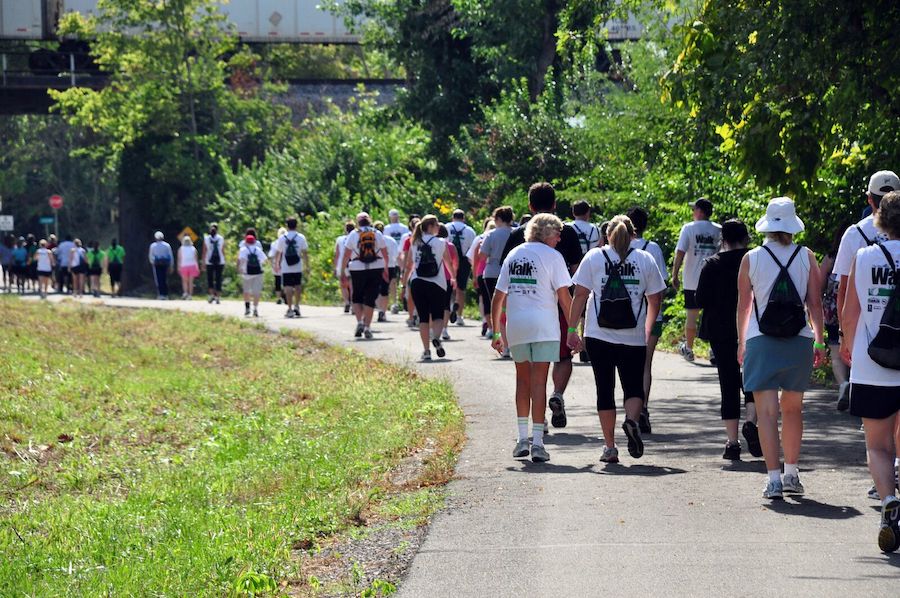
Trails continue to prove their value as vital spaces where people connect—to the outdoors and with each other. Over the past year, we’ve connected millions of people to trails through TrailLink.com™, RTC’s national trail-finder website and app. We’ve also engaged thousands of trail users, who told us how trails were vital and transformative in their lives—providing much-needed outlets for exercise, mental well-being and connecting to nature—and we have elevated their incredible stories to through our #TrailMoments initiative.
On April 23, nearly 200 partners and thousands of people converged across the United States for Celebrate Trails Day to show the transformative impact of trails on communities—with cleanups, group walks and rides, solo adventures and other events taking place in all 50 states and Washington, D.C. Participants logged a total of 812,000+ minutes of physical activity that day, demonstrating how important trails and programming are in inspiring people to be physically active.
Trail Moments | Equestrian Finds Emotional Freedom on the Trail
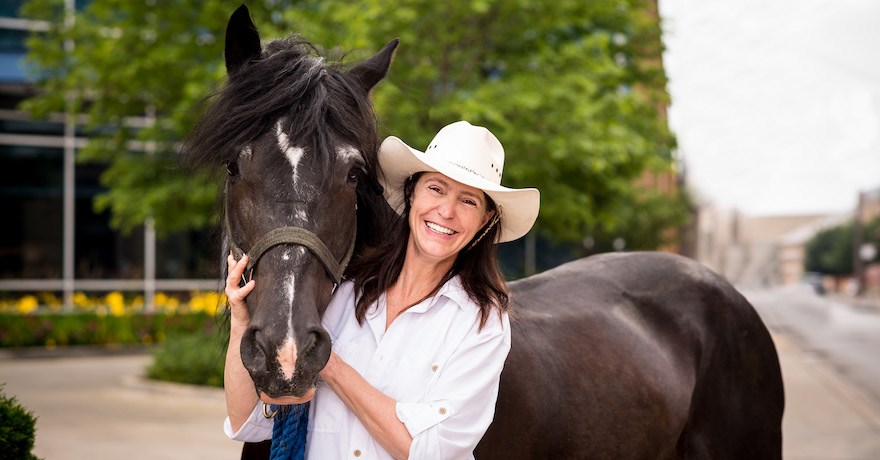
In the fall of 2021, Megan Gray undertook a 187-mile trek by horse on a route that included many rail-trails in Illinois and Iowa. The trip was a realization of a lifelong dream for the equestrian explorer and founder of Buffalo Moon Expedition, which promotes equestrian travel by bringing hope and healing to those on the trail. For Gray, it was also a way to reclaim herself, her emotional freedom and her independence.
As we move forward into 2023, opportunities for trails, walking and biking will continue to unfold. More of the funding and policy changes realized in the past several years will begin to flow for trail networks, and we are optimistic about the possibilities for funding the Active Transportation Infrastructure Investment Program. The TrailNation Collaborative will mature—and with it, the community of advocates, professionals and local leaders working to accelerate trail networks. And the community of people using trails—as part of their daily routines; as spaces for exercise, rest and connection; and for bucket-list adventures—will continue to grow, moving us closer to a future where trails connect everyone, everywhere.
RELATED: Here Are Six Reasons Rails-to-Trails Conservancy is Celebrating This Year
RELATED: Rails-to-Trails Conservancy’s Fiscal Year 2022 Impact Report chronicles a year of momentum and victory for the trails movement.

Donate
Everyone deserves access to safe ways to walk, bike, and be active outdoors.

